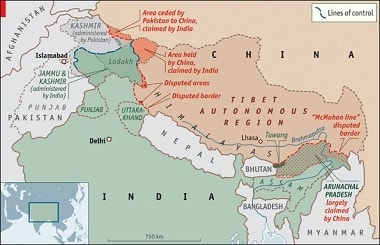
The Union Home Minister Shri Rajnath Singh chaired a meeting with the Chief Ministers of the Indo-Bangladesh Border (IBB) States.
The Home Minister, giving highest priority to making borders secure, had earlier conducted border specific review meetings for Indo-China, Indo-Myanmar, Indo-Pakistan borders.
The importance of securing the country's borders and putting in place the systems to facilitate legitimate trade and commerce was stressed.
India has friendly relations with Bangladesh and all these measures will facilitate genuine trade and legitimate cross-border movement of people while curbing radicalization, illegal migration, and smuggling of cattle, fake Indian currency notes and drugs etc.
Stress was on the need to prevent entry, at International borders, of illegal migrants some of whom have links with extremist groups for furthering anti-national activities with ulterior motives and posing threat to internal security.
Also highlighted was the concept of Border Protection Grid (BPG) for multi-pronged and foolproof mechanism to secure our border.
The grid will comprise of various elements namely physical barriers, non-physical barriers, surveillance system, Intelligence agencies, State Police, BSF and other State and Central agencies.
BPG will be supervised by a State level Standing Committee under the Chairmanship of respective Chief Secretaries.
BPG will ensure greater help for the States in the overall border security. For putting in place the BPG, he sought active participation of all stakeholders including State Governments.
Indo-Bangladesh Border- The Indo-Bangladesh Border covering 5 states of India including Assam, Meghalaya, Mizoram, Tripura and West Bengal is 4096 km long.
- So far in 3006 km border security infrastructure of fence, roads, floodlights and border out posts (BOPs) are in place and works in the remaining 1090 km are yet to be started.
- Out of this, 684 km will be secured with fence and the related infrastructure, and the balance 406 km with the non-physical barriers.
- Although bulk of the infrastructure is in place or under construction, construction in some parts is yet to commence mainly due to land acquisition issues.
- The areas to be covered by non-physical barriers are those where fencing is not feasible like rivers or nullahs etc.
- In these areas technological solutions of a networked combination of electronic gadgets like radar, day-night cameras, various types of sensors etc. all integrated in a command and control architecture will be used.